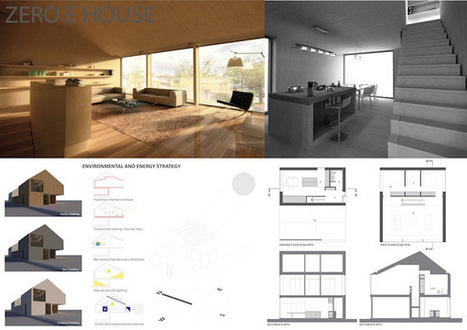The Zero E House was designed by Neil Burford and Alex Pearson of Joseph Thurrott Architects of Dundee, Scotland.
The architects envisioned a home constructed of timber, zinc, and polycarbonate cladding, with cross-laminated timber (CLT) structural walls. CLT –which has been used in Europe for a decade or so, but has yet to see widespread use in North America — is an engineered mass timber product that bears little resemblance to traditional wood. It is composed of dense, solid panels of wood engineered for strength through layers of laminations that meet (and in some cases exceed) the performance of reinforced concrete, but with less ecological impact.
These walls, combined with hemp fiber insulation, form the tight, highly insulated building envelope necessary to keep heating and cooling costs to an absolute minimum, as per Passive House strategy, while putting less demand on the home’s renewable energy systems in order to achieve net zero status...
Via Lauren Moss, xllordes



 Your new post is loading...
Your new post is loading...







